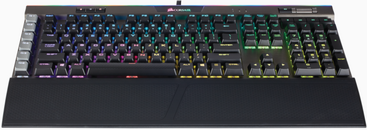"Work better" at what? Fin design (product design in general) is about deciding what you want to accomplish and what tradeoffs you'll have to make to accomplish it. For some products, you can improve everything if you are willing to increase the price. But fluid dynamics requires you to make performance tradeoffs. Making things better in one area is inevitably going to make them worse in another.
- And now for the biggest, most interesting point:
I've never seen any physics or hard experimental evidence proving that the jet fin vent (or indeed any other) design really IS better than all the other gimmicky fin efficiency features out there. Does the vent really make jet fins that much better than an unvented paddle of equal stiffness and weight? Is the vent optimally designed? I would love to see some good independent science done on this. That said, they do seem to work, and anecdotally work better than similar knockoff fins with less vent overlap (eg. RK3s).
I'll give a couple of examples. If you watch cycle racing, you'll have seen time trial helmets become increasingly longer and weirder shaped Greg Lemond's 1989 Tour de France win until 2 seasons ago when they abruptly returned to near normal. It wasn't a rule change. What happened is that helmets were developed with the goal of the least drag when a rider was in an ideal position on the bike. Something like this:
But then the technology got sophisticated enough to model what happens with crosswinds and a rider's actual position over the entire course of a race and they found that the average drag was worse with extreme helmets. It turns out that a whole lot of the small advantage accrued from the above can get cancelled out by just a little of this:
Another example would be propellor pitch on airplanes or boats. You can pitch for a higher cruise speed at the expense of climb/initial acceleration or the reverse. But you can't have both with a fixed pitch prop.
Back to fins. Jet Fins are popular because their compromises match what their users are looking for. First would be precision, small foot movements immediately turning into predictable thrust. Basically a "climb prop". Second would be ability to work with several different kicks. Third would be a convenient size.
So what are the tradeoffs? Top speed for one, a monofin or long freediving fins are a lot faster. Low effort is another. Split fins became popular for a reason, if you stick to their preferred kicking style you can maintain a moderate speed with lower effort than jets.
I should mention Force Fins here. Bob knows this stuff more than anyone and has designed fins that can do pretty much whatever you want. Including fins with user adjustable aerodynamic surfaces, so you can adjust the tradeoff profile mid-dive. The downside here is cost. Not that many people are willing to spend $300 to $400 for what may turn out to be marginal gains for their purposes.





